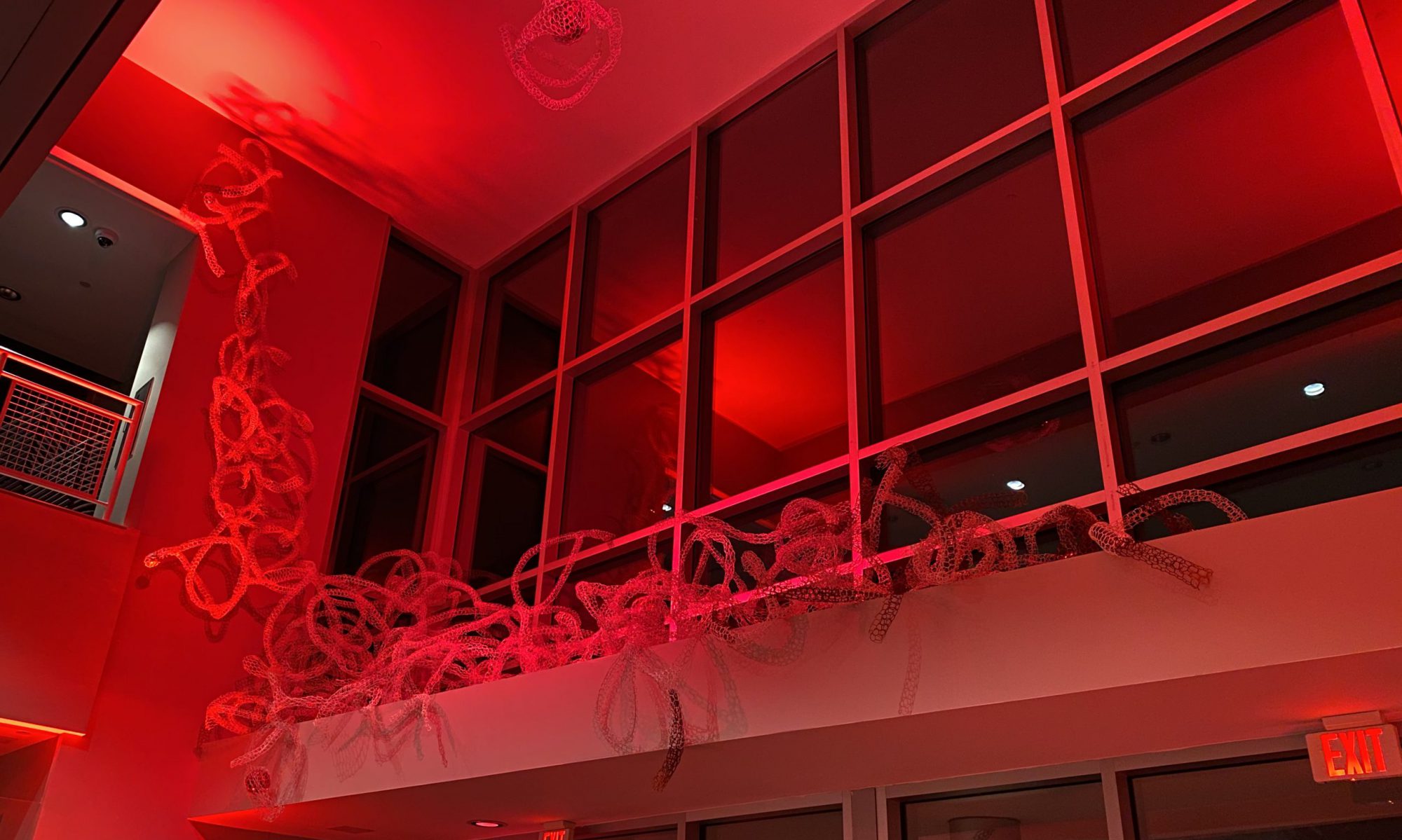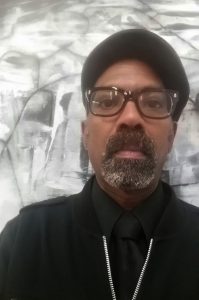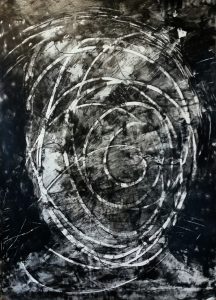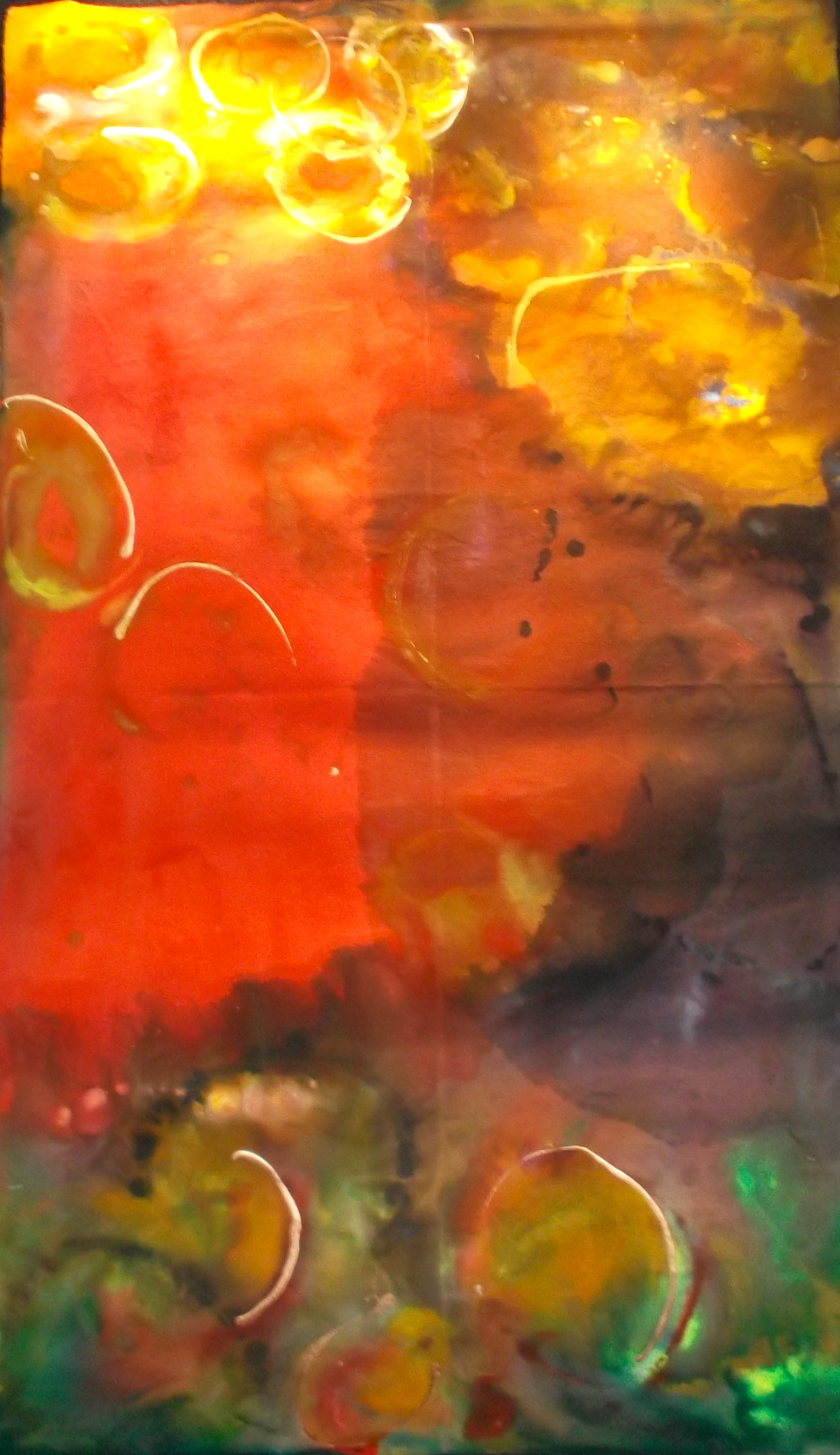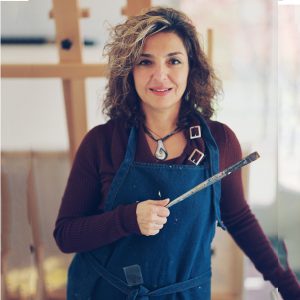 Say Behnam’s solo exhibition of paintings, Capturing the Vibrant, Transient and Eternal NOW is on display through November 4, 2018. We will be hosting a demonstration of the process that Saya uses to create her paints from plants, flowers, spices as well as stones and minerals next Tuesday October 30 12am – 2PM in the Forum Gallery of the Schlesinger Arts Center.
Say Behnam’s solo exhibition of paintings, Capturing the Vibrant, Transient and Eternal NOW is on display through November 4, 2018. We will be hosting a demonstration of the process that Saya uses to create her paints from plants, flowers, spices as well as stones and minerals next Tuesday October 30 12am – 2PM in the Forum Gallery of the Schlesinger Arts Center.
Please learn more Saya’s process with the Q&A profile below and plan to join us next Tuesday afternoon – 12am -2PM.
- At what point in your life did you realize that you were an artist?
From 13 or 14 years old. When I got so happy when copied an image from a cover magazine with a cheap watercolor box I had. I resisted considering fine art as a profession till many years after. I thought that cannot be considered as a real job.
- Was there a particular teacher that influenced you during your studies?
I had a teacher at age 18 who as my father cousin. His character influenced me a lot.
- Are there art historical influences that are particularly important to you?
Yes- I always was so impressed by the colors of Persian rugs and Kilims and miniatures was wondering how they produced the natural colors.
- What is the starting point for your process?
For using natural colors: it was a total accident. One day drinking a hibiscus tea and by accident I split it on my white paper. I kept looking at the colors and how those were changing. I decided to give it a try at my studio . That was the starting point.
- You call your work co-creating with nature. Can you talk a little bit more about how you are co-creating with nature?
I believe all the colors I use are existing in even one flower or plant I use. I am just a transformer. Some one who knows how to take them out and arrange them on the paper. Most of the time when mix or apply the colors on the top of each other I get a new color that is not what it was before. I believe I am not the only creator of my work. It is already in the nature and we co-create it.
- Is there a particular color that speaks to you over other colors?
I am very attracted to shades of red to purple and blues.
7. When did you first start creating your own colors and what was your inspiration?
Since my work is abstract, my goal was how the colors I create compose, interact and work together as a whole.
- The surface that you are painting on with the natural colors feels important. Can you tell us more about the quality of the surface you paint on – i.e. the silk, cotton and handmade paper?
I realized natural colors prefer natural surface rather than chemically primed.
For example natural silk and cotton and paper are the best. I normally use them instead of primed canvas.
- Do other art forms such as literature or music influence you?
I love poetry. I do write poems from famous Persian poets like Khayam, Hafiz and Rumi in my art . Listening to music is a big part of my day. I daydream with it. I get inspiration, become happy, sad and calm.
- What advice would you give to a young artist that is just starting out?
If you feel art is a big part of your soul, don’t afraid going after it and follow it professionally. It won’t be easy, but since artists’ reward is internal you can hang out there even when you don’t get result immediately.
Thank you for your time and please see additional works from Saya at her website at https://www.sbehnam.com/
